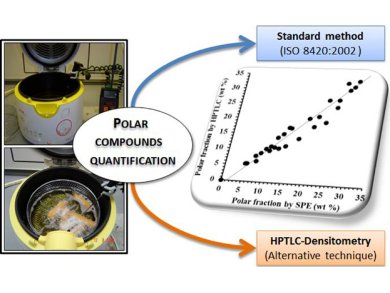Polar compounds in edible oil originate from various reactions taking place during storage and heating, such as oxidation, polymerization, and hydrolysis. Therefore, polar compounds are a direct indicator for the age and quality of an oil and their quantity in oil-samples is also the basis for the international regulations limiting the use of degraded frying oils for human consumption. The international organization for standardization (ISO) states, that the content of polar compound has to be determined by adsorption chromatography extraction followed by gravimetric quantification. This method is accurate and simple, but time-consuming and uses considerable amounts of silica-gel and solvents.
Jérôme Lecomte, UMR IATE, Montpellier, France, and colleagues established high-performance thin layer chromatography densitometry (HPTLC-D) as a fast and reliable alternative method to quantify polar compounds in frying oils. Different samples from sunflower, peanut and soybean oils untreated and heated to 180 °C show, that this method is accurate and repeatedly able to quantify polar compounds. Therefore, HPTLC-D might be an economic and environmental beneficial alternative to the ISO standard.
- Rapid quantification of polar compounds in thermo-oxidized oils by HPTLC-densitometry
Ana Cristina Correia, Eric Dubreucq, Suzana Ferreira-Dias, Jérôme Lecomte
Europ.J. Lipid Sci. Technol. 2014.
DOI: 10.1002/ejlt.201400230



